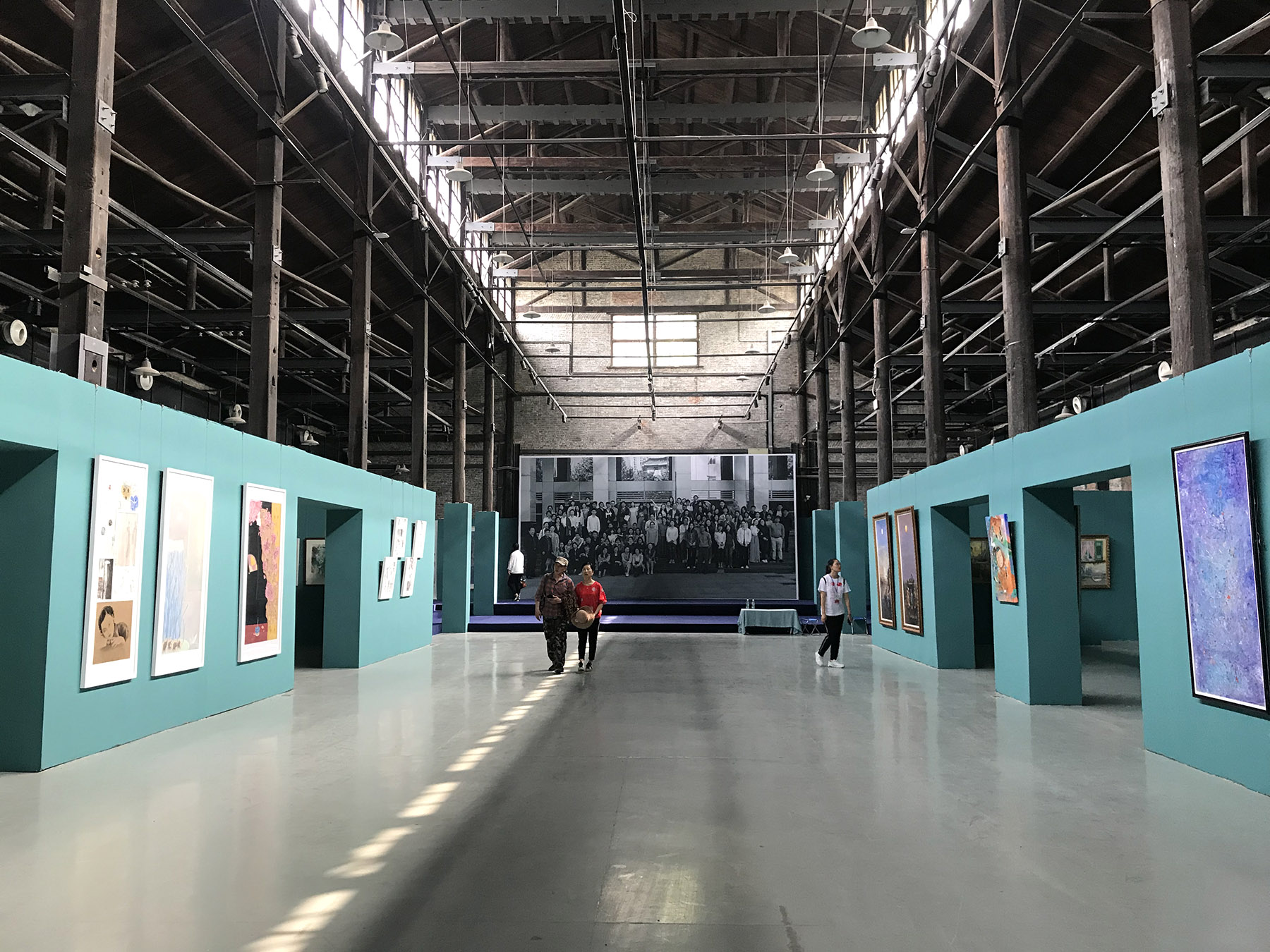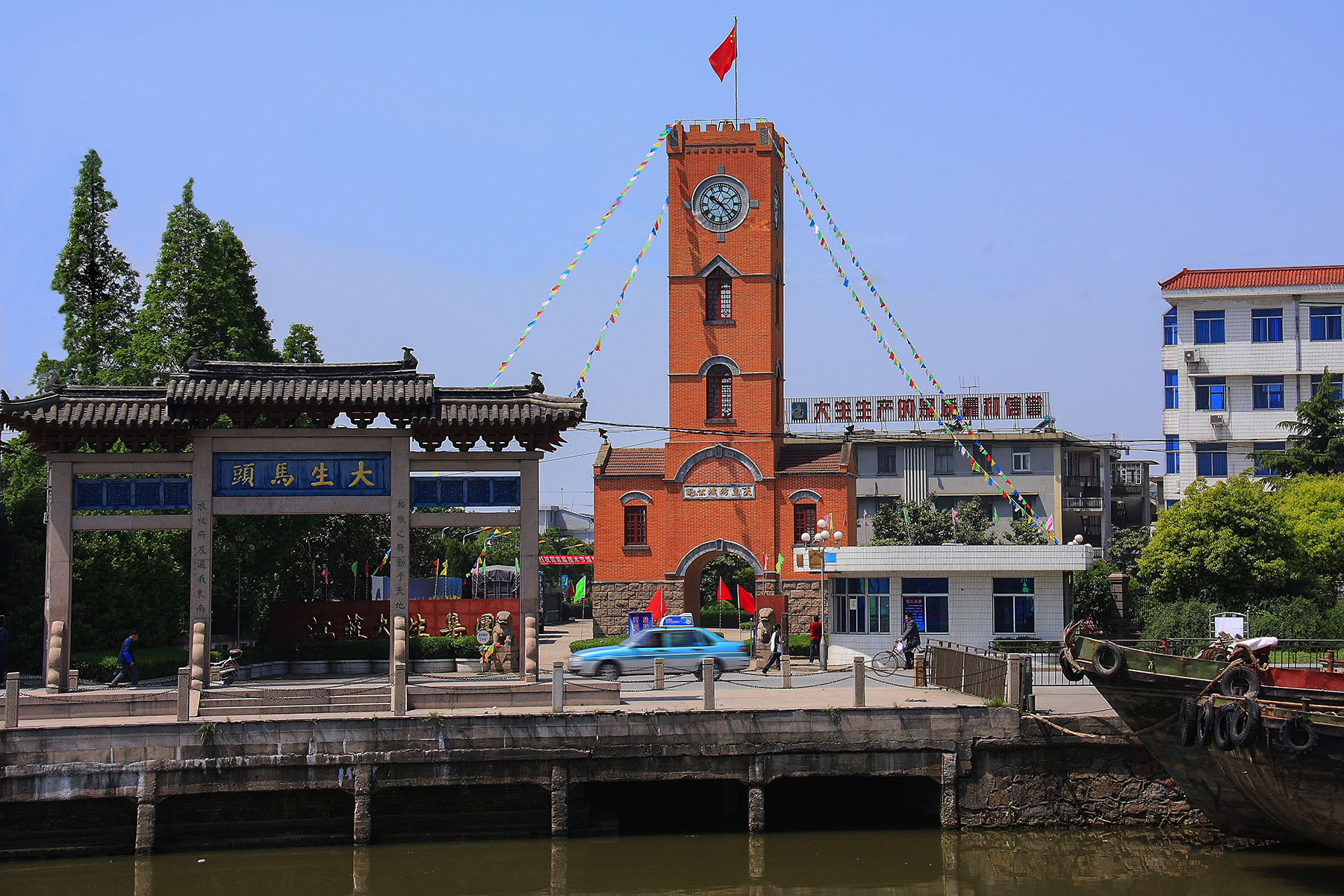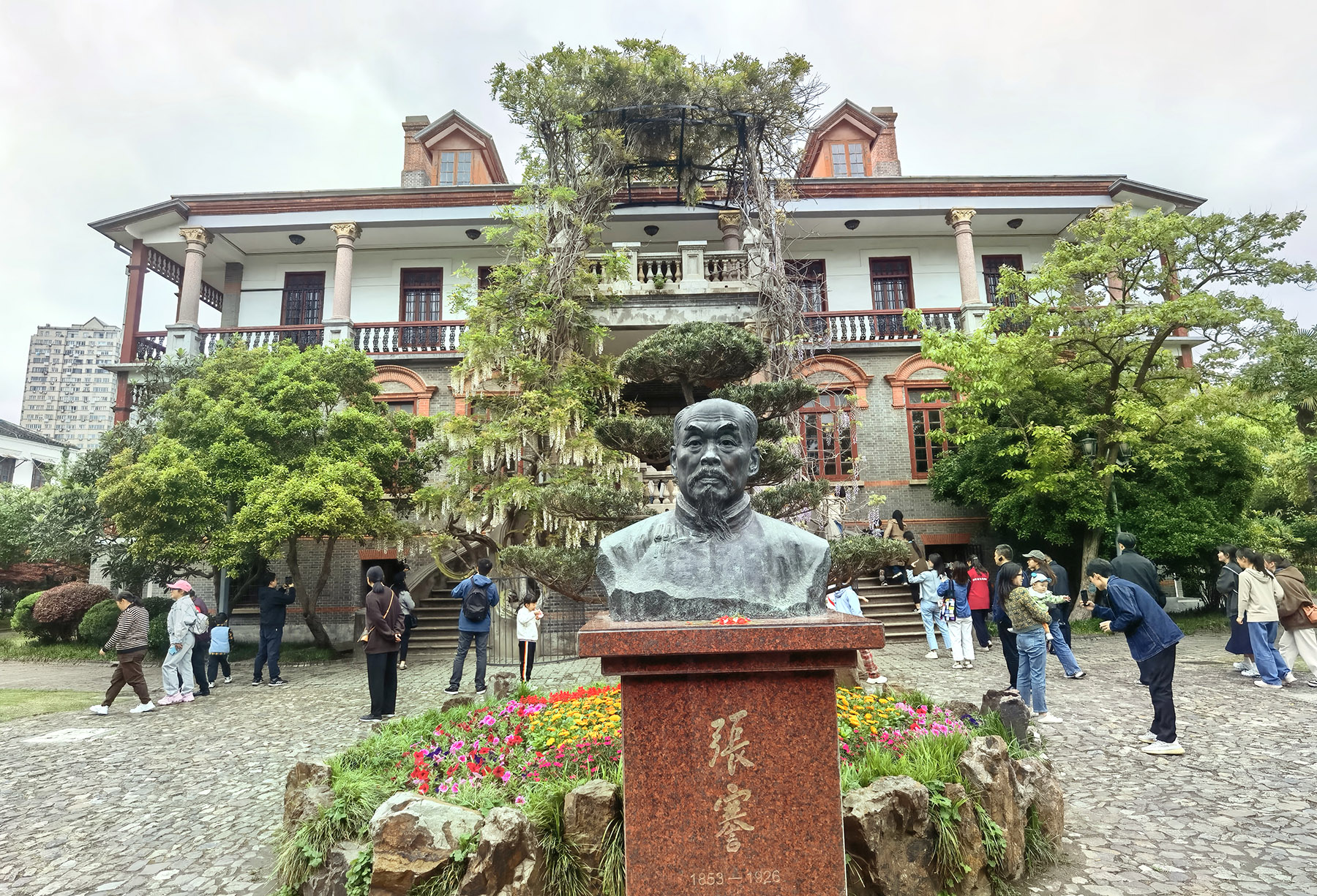Ancient town retains charm of the past with modern efficiency, Li Wensha and Li Yingxue report in Nantong, Jiangsu province.

A century ago, the tall clock tower's bell rang out, signaling the shifts for workers at Dasheng Cotton Mills.
Adjacent to the clock tower, on the bank of the canal connecting Nantong to Yangzhou in Tangzha ancient town, Nantong city, Jiangsu province, the bustling Dasheng Wharf facilitated the unloading of raw cotton and the dispatch of finished products to Shanghai, Sichuan and Jiangxi provinces and beyond.
Today, the clock tower, built in 1915 and once the highest point in the area, still stands proudly, with its bell ringing on the hour, every hour, just as it did 100 years ago.
READ MORE: Yangtze River Delta put into focus
The Tangzha area originated in the Ming Dynasty (1368-1644) when a local official had a floodgate, or zha, constructed on the canal. As the floodgate was near a family surnamed Tang, so came the name Tangjiazha — Tang family floodgate — later shortened to Tangzha.
The ancient town, now a subdistrict of Nantong's Chongchuan district, is well-preserved and retains much of its original architectural charm. Yet this historical subdistrict of Nantong has undergone a significant transformation.

Since the start of the new century, the Nantong authorities have launched preservation efforts for the area's industrial heritage, transforming it into a historical and cultural subdistrict. Adhering to the principle of restoring buildings to their original condition, the architectural complexes have been repaired and added with new service facilities. Meanwhile, the area's original charm and appearance have been maintained.
Tangzha ancient town now stands as a beacon of efficient production for blended yarn and fabric and has become a new hot spot for industrial heritage tourism. Additionally, it hosts numerous cultural enterprises, blending its rich historical legacy with modern innovation.
Tangzha ancient town has been praised by Wu Liangyong, a professor at Tsinghua University and an academician of both the Chinese Academy of Sciences and the Chinese Academy of Engineering, as the "foremost town of modern industrial heritage in China".
During a visit to Nantong in 2002, Wu noted that "since the Self-Strengthening Movement, Tangzha has become the most well-preserved site of modern industrial heritage in China. It features the most diverse and substantial array of industrial categories, with its original sites and conditions remarkably intact. Tangzha is a prime example of early Chinese national industry". The Self-Strengthening Movement was a campaign of economic and military modernization in the second half of the 19th century, designed to strengthen the national power during the Qing Dynasty (1644-1911).

Solid foundation
The visionary behind Tangzha's transformation was Zhang Jian (1853-1926), from Nantong, a top scholar of the late Qing Dynasty, who was a leading social reformer, educator and a patriotic industrial entrepreneur in early 20th-century China. Starting in 1895, he established factories, founded schools, built parks and constructed roads, shaping Tangzha into one of the first significant industrial towns in modern Chinese history.
Today, Zhang's vision for the place is presented in a new way, with Tangzha's unique blend of historical charm and contemporary innovation making it a captivating destination for both tourists and businesses.
An old warehouse that stored cottonseed oil a century ago is now an urban memory exhibition hall. A handmade soap factory transformed into a cultural experience center and a former rice milling plant is now a movable type printing experience center. A vegetable market, once a facility for workers, has been converted into a commercial street in the Tangzha Beishi, or northern market, a scenic area that was located north of the ancient town. Since opening in October 2021, the scenic area has attracted over 3 million visitors, according to local authorities.
In 1895, Zhang founded China's first large-scale cotton textile enterprise, the Dasheng Cotton Mills. He didn't stop with the cotton mill. He maximized the use of raw materials at every production stage. Cottonseeds left after ginning were pressed for cottonseed oil and the waste from the oil plant was used to produce soap and candles. He also established oil mills, flour mills, ironworks and breweries. Tangzha soon became a bustling commercial hub, a key transportation center and a booming industrial town in the region, earning Nantong a place as one of the birthplaces of modern Chinese industry.
For over 120 years, the Dasheng Cotton Mills has operated at its original site. The wharf, factory school for workers' training and a man-made river that is a key water resource for fire prevention in the factory still serve their original purposes, making the mill a living museum of Chinese industrial history.
"As the new generation of 'Dasheng people', we aim to carry forward Zhang Jian's entrepreneurial spirit," says Qi Yingbin, chairman of Jiangsu Dasheng Group. The company has preserved the factory's historical look while embracing modern trends in the textile industry. The newly built smart spinning factory has significantly boosted production efficiency.
In 2022, the Dasheng group launched China's first smart spinning factory during the 14th Five-Year Plan period (2021-25), requiring fewer than 10 workers per 10,000 spindles. This factory was recognized by the Ministry of Industry and Information Technology as a model smart manufacturing facility. Currently, the factory employs over 7,000 people, Qi says. "Looking ahead, Dasheng group will focus on smart manufacturing, low-carbon development, full industrial chain integration, and promoting Zhang Jian's cultural legacy," he adds.
The historical buildings of the Dasheng Cotton Mills have been carefully preserved. Qi accentuated their commitment to minimal intervention with the principle of "restoring the old as the old".
The goal "is to make it look as if no restoration has been done", Qi says. "For example, the clock tower's original appearance was kept, the corroded stairs replaced and the clock fine-tuned for accuracy. Now, it still chimes on time."
And plans for more detailed protection and launching of industrial heritage sites and expansion of industrial heritage tourism will be realized, Qi adds.
Over 100 years, three things at Dasheng Cotton Mills have remained unchanged — the name given by Zhang Jian, the focus on the textile industry and the factory's original location.

Hands-on experience
Wang Zhenyu, a staff member from Nantong Chongchuan cultural tourism development company, introduced how Tangzha's old industrial sites have been turned into cultural attractions.
For one thing, local people observe May 23 every year as the Industrial Culture Experience Day, to commemorate the birth of the first batch of yarn that was produced by Dasheng Cotton Mills on May 23,1899. "This event helps residents and tourists experience the industrial culture and the patriotic spirit of early entrepreneurs represented by Zhang Jian," Wang explains.
More industrial tourism routes will be launched, attractions to be upgraded and heritage sites that have been scattered in various locations across the town will be connected in the future. This shift aims to enhance the preservation and promotion of industrial heritage, Wang adds.
For example, every month on the 17th and 18th when historically, workers at Dasheng received their wages and spent money, they celebrate the "17/18 shopping festival", encouraging rounds of shopping once a month. "We turned this tradition into a market featuring cultural heritage products and Nantong's specialty snacks," he says.
"Our activities are based on Tangzha's unique cultural resources."
Experiential tours for children and residents are also hosted, Wang adds.
In a printing museum built based on the renovated rice milling factory, visitors engage in activities such as selecting movable types of Chinese-character blocks and arranging a model plate of their choice, ready to print. The museum also showcases old printing equipment like typecasting machines and flatbed printers, creating a rich cultural atmosphere.
Among the visitors is resident Dou Jianying, 30, with her 6-year-old son. While picking out word blocks, Dou explains to her child the history of movable-type printing, one of the "Four Great Inventions "of ancient China.
"We printed some four-character idioms, giving my son a taste of traditional culture, which I found really meaningful," Dou says.
ALSO READ: Crowning passion
A short walk away from Dasheng Cotton Mills, visitors arrive at the "Year 1895" cultural and creative industrial park. Since 2009, Nantong has been preserving Tangzha's industrial heritage, transforming the great Zhang Jian's legacy into a bustling park.
With its old walls, tall chimneys and industrial-style buildings, the park is a blend of history and charm. Xu Hong, general manager of the park, explains that it houses 44 buildings, five of which are more than 100 years old.
Following the principle of "restoring the old as the old", they carefully repair damaged parts with century-old wood, keeping the original look intact, while reinforcing with stainless steel on the outside, Xu says.
Buildings No 7 and No 8, both over 100 years old, are now public spaces that host various events, such as car launches, anime shows and fashion shows. "We hold nearly 100 exhibitions a year," Xu adds.
According to her, the park has attracted over 40 companies who rent office spaces — keeping the old machinery as background exhibits — where young designers work next to antique machines, blending history with modernity seamlessly.
Contact the writers at liyingxue@chinadaily.com.cn


